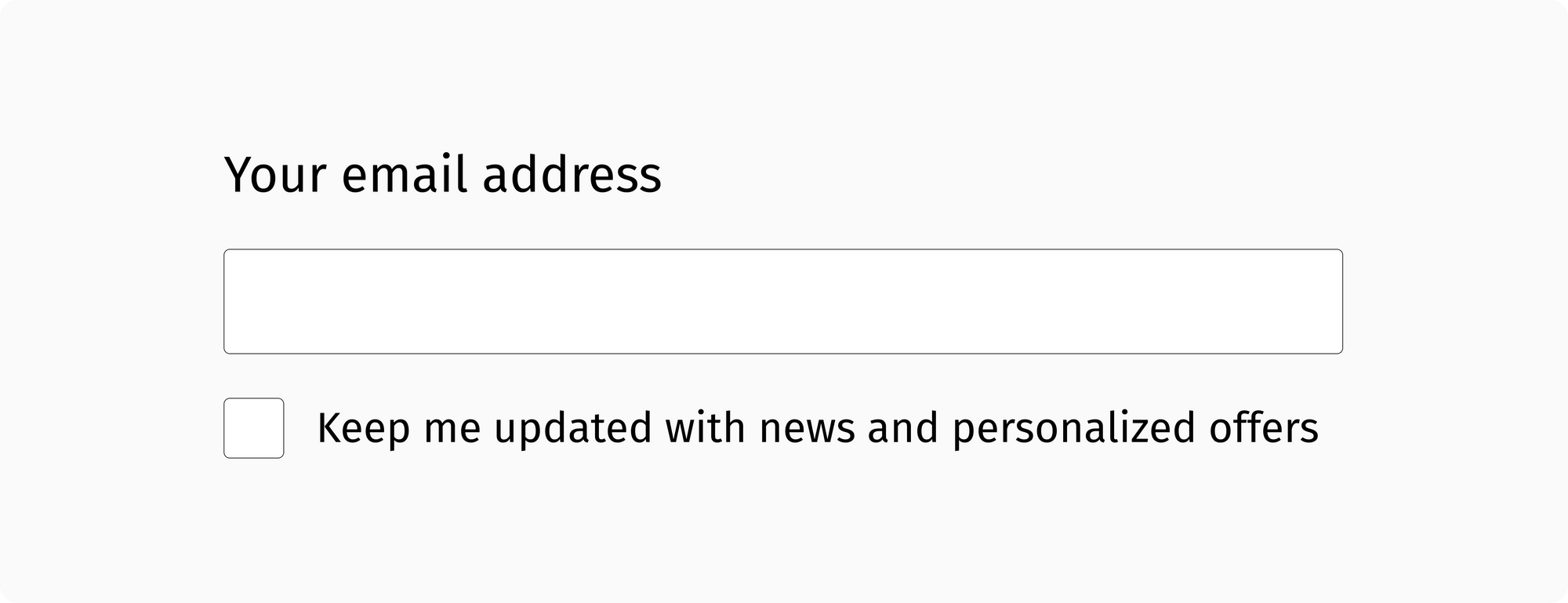No matter how seamless your checkout process is, there will always be a percentage of customers who abandon their carts before completing their purchase. Businesses can use these customers as a highly targeted list of contacts to run abandoned cart recovery campaigns. As with any marketing initiative, you have to collect two pieces of information from your customers: a way to reach them out, like their email address or phone number, and their consent to be contacted.
The process of collecting their contact details usually starts with the checkout process. You can gather the customer email and a marketing consent with a checkbox that allows customers to opt in to any types of marketing initiatives, including abandoned cart campaigns.

It's essential to capture these two pieces of information as soon as possible. Only carts with these two pieces of information can be recovered. However, merely having an email address attached to a cart and a flagged consent from the customer is not sufficient to consider it "abandoned". Every order has this intermediate condition before it is placed by the customer. To distinguish abandoned carts from those that are simply part of the order pipeline process, you need some additional logic.
When is a cart considered abandoned?
An abandoned cart is one that has not been touched by the customer for a certain period of time. You can easily calculate the time that has passed from the last interaction with an order by attaching a "last updated" timestamp to it.
Whether a cart is marked "abandoned" after a day, a week, or a month is a business decision. In some cases, businesses that are more aggressive with marketing send abandoned cart recovery campaigns after only a few hours. Some prefer to be less pushy.
In any case, it is your responsibility as a developer to support any scenario and adjust your abandoned cart query accordingly. Each day (or hour), you can check for abandoned carts and trigger a new campaign. In an ideal world, each customer would receive a link to their abandoned checkout, which would be filled out with all the information which they had left there. In order to achieve this experience, your cart and checkout must be stateless, otherwise the checkout session may be already expired when the customer receives the cart recovery email.
Motivating the customer to buy
An effective way to motivate customers to complete a purchase after they abandon a shopping session is to attach a promotion to the abandoned cart recovery campaign. The easiest way would be to build a checkout application that accepts coupon codes as URL parameters. Using this method, you would only need to share a checkout link with a coupon code on your marketing campaign to apply a discount.

You don't have to be a black hat hacker to understand this mechanism and voluntarily abandon your shopping cart just to get a discount. Yes, I've done this myself in the past, not just to save some bucks, but also to get that little satisfaction you get when you hack something! I'm sure many brands know people use abandoned cart recovery campaigns intentionally, and that's fine with them. You just have to be aware that it's a small security hole that can give out coupons to people (like me) who would make a purchase anyway.
Tracking the effectiveness of your campaigns
A tracking mechanism is another nice feature that you can add to your checkout application to measure the effectiveness of abandoned cart recovery campaigns. In the same way that coupon codes are automatically attached to orders, tracking codes can be added as well.

As soon as an abandoned cart is recovered (i.e., an abandoned order is placed), you can send this information to the system you used to send the campaign and track a conversion. By closing the circle, not only can you track your campaigns' ROI, but you can also ensure that you improve your workflow and don't spam your customers.
Don’t be spammy
An abandoned cart recovery email sent too early can irritate the customer and negatively affect the business. Double-sending recovery emails to a customer or sending them to those who have already made a purchase can be even more detrimental.
Once an abandoned cart recovery campaign is underway, it's essential to track the orders that were included in the campaign. When an order is placed, you must opt out the customer from any lists to which the order may belong. You can do this with a real-time webhook or with a cron job. Finally, it's always a good idea to opt out customers after a certain number of attempts, even if they never placed the ababdoned order.
Once again, the maximum number of attempts is something the business can control and change based on its marketing strategy. That said, there's nothing stopping you, the developer, from suggesting some best practices if you feel the marketing department's getting too spammy. In the end, your organization's reputation is its biggest marketing asset, and every individual should take responsibility for protecting it.